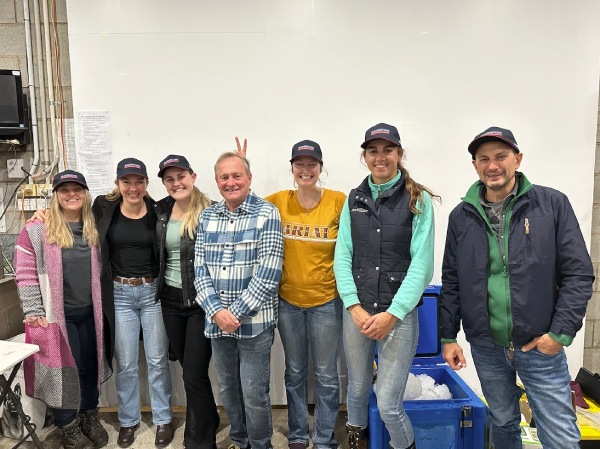Archives
March saw the EVA State Meetings taking place across Australia. They ran from 13th March in Perth to the final event on Thursday 21st March in Queensland. We couldn’t get to every event, but Jon Marriott represented Radincon in Melbourne, Sydney and Queensland.
Attending three events in four days was pretty hectic, but it was nothing compared to the pace set by Dr Emmanuelle van Erck-Westergren, who flew in from Belgium to present at all six State events. From what she shared on LinkedIn, she crammed in a lot of other fun things too. Sightseeing, boating, checking out the local wildlife and culture. The ‘work hard, play hard’ ethic applies to vets everywhere, not just in Australian
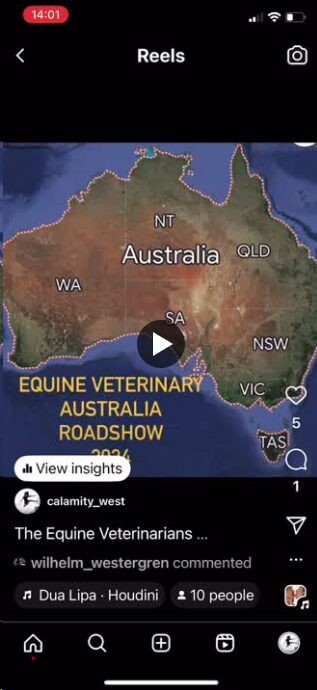
Dr Emmanuelle heads the Equine Sports Medicine Practice in Waterloo, and is President of the Belgian Equine Practitioners Association. A renowned expert in equine cardiac and respiratory systems, she had so much information to share with us. That included the latest innovations in mobile exercise testing and overground endoscopy, which are especially useful for diagnosing issues in the upper respiratory tract.
Here she is being introduced by Pete Carrigan at the EVA NSW State Meeting at Warwick Farm:
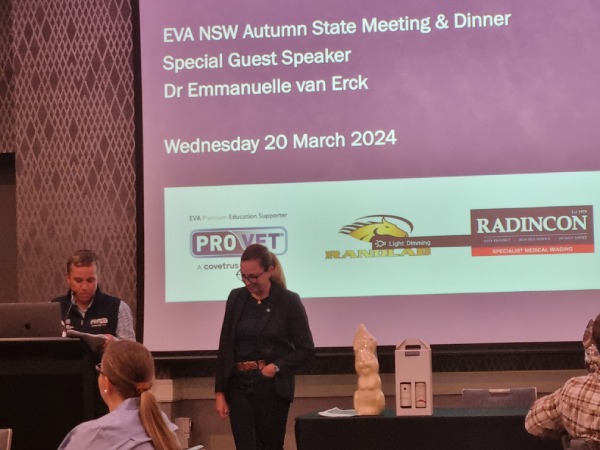
And wowing the crowd in Queensland:
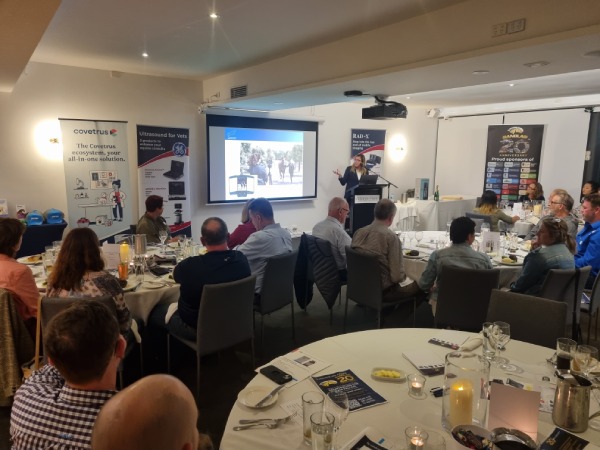
By this time, it was the end of the roadshow and we all felt like old friends. That’s where the photo at the top comes from, showing Dr Emmanuelle with EVA State Rep Mark McGarry, our very own Jon Marriott, and Albert Sole Guitart.
The comments of the 200 plus vets who attended the EVA State Meetings this year show that Emmanuelle van Erck-Westergren was an inspired choice of presenter:
‘Thought-provoking and very practical information’
‘What a great speaker. So engaging and genuine’
‘I have been coming to these for six years and that was the best talk we ever had’
The vets also enjoyed good food and great company, plus plenty of opportunities to network, compare notes and learn. Elements of fun like prize draws too. Congratulations to our Radincon draw winners, including Allan Frogley of Warwick Farm Equine and Alex Ashworth of Ashworth Vet Services.
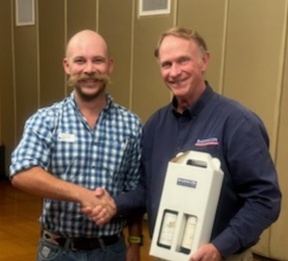
The Radincon team is proud to support the vet community through events like this. Lovely to get positive feedback from Mark McGarry too. We’re glad to do our bit working alongside dedicated vets like him and his colleagues.
We’re already looking forward to the next round of EVA State Meetings!
We caught up recently with Chad Staples of Australian Wildlife Parks, to find out more about him and the parks he looks after.
I always had a passion for animals, and I joined Featherdale Wildlife Park straight out of high school. I started as a casual, but was full time within a couple of months. I loved it. I stayed in that role for about 5 years, working with a range of different animals and species, then moved into a more educational role.
Featherdale has always been heavily involved in education. The park runs curriculum-based programs for students from primary to university level, with the bulk being primary school beginner level courses. It’s a natural fit – that’s when the kids learn about Australian animals, and with the largest collection of Australian natives in the world, Featherdale is well set up to teach them.
I moved on from education into a curatorial role, which has been a part of my work ever since. That means I’m looking at which species we should have in the collection, setting up breeding programs, organising animal exchanges, looking at diet and vet care. Even as Managing Director, I’m 100% hands-on with the collection. Our animals always come first.
There’s no such thing as a typical day for me! There are always different things happening, depending on the season and on current projects.
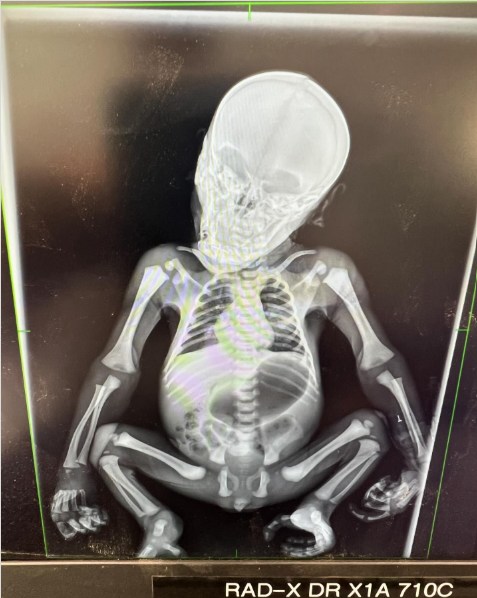
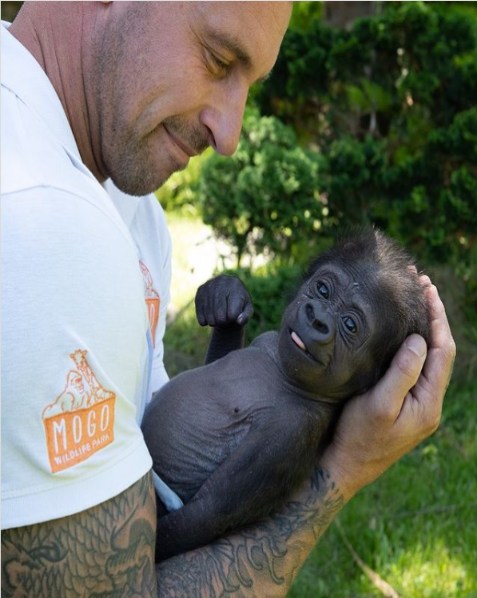
For example, one major project at the moment, at Mogo Zoo, is moving our gorilla Kaius in to live with the rest of the gorillas. He was hand-reared after a difficult birth, so his experience is quite different from the others. Great apes are complex creatures too, physically, emotionally and mentally. We’ve been taking this really slowly – it’s a case where it’s better to go slow than to push too hard and risk things going wrong.
There’s really only two things I can say stay the same:
It’s complicated! And it’s another reason no two days are the same for me!
I look after Featherdale Wildlife Park in Doonside in Western Sydney, Hunter Valley Wildlife Park and also Mogo Wildlife Park on the NSW South Coast.
Most weeks I spend time at two or even all three locations. I have places I can stay near each of them, but it can get hectic.
The most obvious difference is the kind of animals at each park.
As I already mentioned, Featherdale stands out for having the world’s largest collection of Australian natives. There’s a huge diversity of species, including birds and reptiles as well as mammals. That works for a site in Sydney where there are plenty of international visitors who want to see the local fauna.
Mogo, on the other hand, serves mostly the local community and is 100% exotic species. The locals live in fantastic country and get to see lots of Australian animals every day – they’re looking for something a little different. It doesn’t have as many different species as Featherdale, but it’s more spacious. Some of those big animals need big enclosures!
Hunter Valley Wildlife Park is somewhere in the middle, about 50% natives and 50% exotics.
Whichever park you go to, though, the overarching purpose is the same. We want to care for and protect endangered species. And we focus on our visitors and what they want to see. Those two factors drive constant change in the parks – we’re always looking at which species we should retire or bring in. Location matters for that too. Each park has a different climate, so we need to place animals where they have the best chance to thrive.
Radincon’s a vital part of our care ecosystem for our animals, along with our network of vets. We work with multiple vets at each location, depending on the species the animal as well as the specific issues it presents with.
Keeping animals healthy is complex. We have vets in every week. Our aim is to deliver proactive healthcare, to look out for issues before they arise, but sometimes it doesn’t work out that way. It’s not just that we can’t communicate with them, it’s also because they hide any impairment. They don’t want to show weakness. When you do find a problem, diagnostic imaging is a far better option than invasive surgery.
Things have changed a lot over the time I’ve been working. When I started out, a lot of our diagnostic health checks weren’t done on site. We’d travel with the animals to wherever the vet was. Buit for the last 10 years we’ve had Radincon x-ray and ultrasound equipment on site and the vets come to us instead. It’s much less stressful for our patients! We’re always learning and we’re always trying to improve.
We’re serving up a double dollop of featured vets this month, as we talk to the co-founders and owners of Manly Road Veterinary Hospital, Christine Kidd and Pauline Gaven.
We’re the same as everyone else really. We just loved animals and science. We both studied at the University of Queensland, although at different times. We’ve been running Manly Road Vet Hospital for decades now, in this building since the mid-1980s.
I was already working as a vet when Pauline’s mother’s dog fell off a balcony and broke his leg. I got a call at 2am and took the X-rays. Pauline was working in Canberra at the time as a human radiographer, but she’d come up to visit her mother, so that’s how we met. She was kind enough not to critique my X-ray technique! Instead, we got talking and I found out she was planning to come back to Brisbane and study veterinary science in the next 6 months. It was a bit of a meeting of minds. We had the same interests and the same work ethic, so once she graduated, we set up in practice together and Manly Road Vet Hospital was born.
It’s a 24-hour vet hospital with around 130 staff in total, including 20 vets as well as us. Not everyone is full-time, but it is pretty full-on! We treat mostly dogs, cats and horses, but of course there are more exotic animals as well. We get the odd pig, cow, llama and alpaca too.
Our practice is purpose-built. We were working out of a small shop before that and we knew we’d outgrow it. We were pretty hands-on in the design and build process – our architect originally had some narrow corridors which horses wouldn’t have liked, so we had to be. We wanted a building which was practical and which wouldn’t date. We’ve done pretty well, but now we’re outgrowing this building too.
We both see all kinds of animals, but my area of focus is reproduction in dogs. Pauline works predominantly in ophthalmology. She lectured at the University of Queensland and she also works with the zoos in and around South East Queensland. There’s nothing like having to climb a ladder so you can treat the eyes of a giraffe!
In the future, we want to go on doing more of what we’re doing now, running a practice which marries high quality work with kindness to our patients and our clients. We’ve already expanded into another building.
We’ve known them for too long to remember! We use Radincon DR X-ray systems for both small animals and equine / large animals as well as their ultrasound when we’re out in the field. We had equipment from somewhere else originally, but we chose Radincon for the quality of the equipment and because of their reputation. The after sales service is amazing. We call on Sundays or after hours and we always get help. I remember one weekend Alex was on his way out to attend a wedding, but he stopped and took the time to help us out.
We use RocketPACS to store all our images too. We’re a busy practice and the old eFilm reader was getting clogged up with too many images, so we switched over about 18 months ago. It’s been easy and now we’ll never run out of space.
What life outside the practice? 90% of our spare time we spend being vets, talking to staff, or talking to each other about the practice. It’s our life and our passion, so we’re not complaining.
Of course, there are all the animals of our own we’ve had over the years. Dogs, cats, birds, chickens, horses, geese. A cow once.
That’s tough…
There are two main things, I think.
First, don’t limit yourself by specialising too soon.
Choose a good practice to start with – one which has a wide variety of patients and cases. That will give you the chance to learn what you enjoy, then you can decide what you want to specialise in – or whether you want to specialise at all. You might prefer to keep treating a variety of patients all through your career.
Second, if you decide you want to run your own practice, be aware that it’s fantastic but intense.
Vets are not trained to run a business, so you’ll have to learn all that as well. If you’re thinking about it, do a couple of business courses and talk to business owners. Talk to the vets who run your practice too, and observe what they do. And never underestimate the energy it takes to support your staff so they get what they want and need.
You need to run a business which makes money so you can continue, but it’s not all about the money. We’ve always put our patients and our team first. That’s the secret to our success.
After a few tumultuous years of cancellations due to Covid and weather challenges, the endurance riding 2023 season was a welcome return to a more regular schedule. Radincon sponsored rider Susan Woodward made the most of it!
She kicked the season off in Victoria in February, riding for the Castlebar team. Guided by head trainer Tahlia Franke, the Castlebar team achieved a 100% completion rate. Susan’s mare, Castlebar Avelina, finished 7th in the middleweight division.
In an unexpected turn of events when Susan’s friend Brandon broke his ankle, she found herself taking over the training and campaigning for his mare Cameo Cranberry Moon. The initial plan was to take it easy, but Cami had other ideas. She and Susan ended up winning one ride and securing 3rd and 4th places in the others.
Susan continued riding Brandon’s horses throughout the season. The highlight was a 25th place finish in the national championship ride, the Tom Quilty Gold Cup, on his bay mare, Brookleigh Matisse. The afterparty, with exuberant winner Ashley Cole celebrating her victory, was a memorable moment.
For the rest of the season, Susan rode for the Conderosa Arabian Stud and the Bushgrove team. Con Bouzianos breeds exceptional mainly purebred Arabians, and the rides on Conderosa Dion and Conderosa Hector were truly enjoyable. Susan also loved being part of the Bushgrove team’s successful 2023, cheering on Sarah Parker, who became NSW State Champion riding their 17-year-old stallion, Cooroora Allyjah.
The 160km State Championships were hosted by Willow Vale Endurance, and took riders through scenic old-growth forests near Wandandian on the NSW South Coast. A personal highlight for Susan was riding for the well-known competitive endurance team, Blakes Heaven, aboard the relative newcomer Blakes Heaven Bon Vivant. Despite a setback with Viva being lame a week before the ride, they successfully completed the challenging 120km ride.
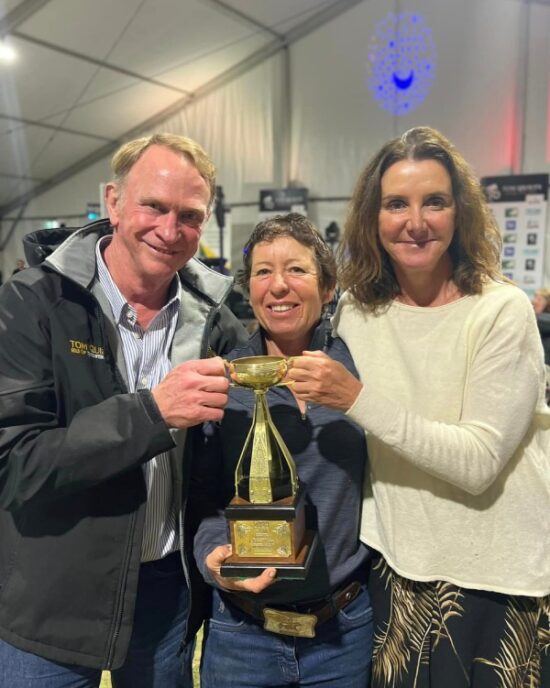
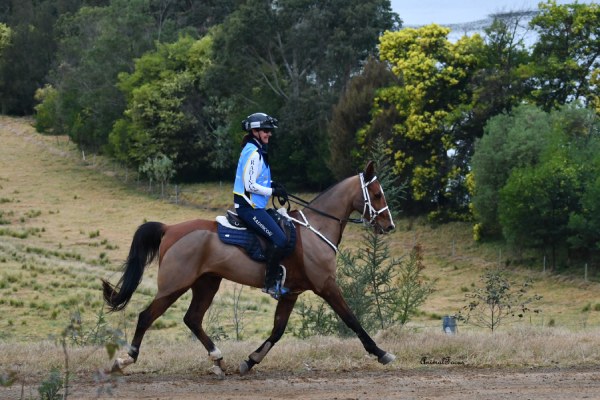
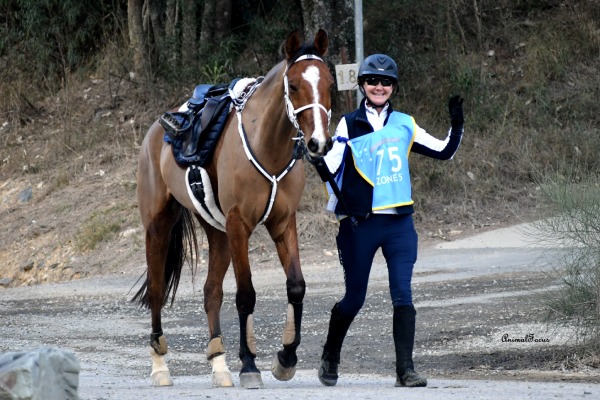
This accomplishment meant Susan wrapped up the season having covered 849 competitive kilometres in NSW. This earned her the title of NSW Distance Rider of the Year. It also secured her the 8th spot nationally, achieving an overall total of 1014km. A few top ten placings and a healthy completion rate meant she also came equal fifth in the NSW Pointscore.
With the 2023 season now over, Susan’s looking forward to 2024 and her next season of endurance riding adventures.
Byron Bay Wildlife Hospital Founder and CEO Dr Stephen Van Mil was already working on plans for a large mobile wildlife hospital when the devastating Black Summer bushfires of 2019-2020 struck.
The potential to improve wildlife survival rates was huge.
A bricks and mortar hospital takes a lot of capital and even more red tape to build, so the idea of a mobile hospital was borne from a desire to fast-track development. The bonus was that it could be relocated to disaster locations facilitating faster treatment. That meant reduced risk of infection or dehydration, as well as less trauma for already injured and scared wild animals.
Byron Bay Wildlife Hospital was established as a registered charity in September 2019. By June the following year, it had raised over half a million dollars and was ready to start building. The World Wildlife Fund contributed additional funding to the cause.
Then there was the contribution of Biggy Pop, avian son and much-loved companion of the Godfather of Punk Iggy Pop. A cockatoo with an Instagram account of his own, Biggy was a natural choice for patron of the new hospital in a country where so many of his relatives were suffering. He got the fledgeling hospital publicity it couldn’t have hoped for otherwise. A rescued cockatoo himself, Biggy wants to help the humans in Australia look after his relatives there in the same way.
Within a few months Foundation Vet Dr Bree Talbot had joined Byron Bay Wildlife Hospital. She and vet nurse Hayley Farley began treating Aussie wildlife at Lennox Head, and then in November 2020, the star of the show “Matilda” was launched on the world.
Matilda is a fully-equipped and licensed vet hospital designed to fit in a custom-built semi-trailer. Clever engineering means Matilda can expand to 3.6 metres wide, giving vets all the space they need to treat animals – but the walls retract for travel so that she’s legal on the road. Inside, she’s kitted out with X-ray, ultrasound, endoscopy, anaesthesia and intensive care. With the assistance of WWF-Australia, Radincon were delighted to provide support with the X-ray and ultrasound systems.
‘These are vital pieces of equipment for our hospital. Instant imaging allows us to diagnose problems faster, helping to improve survival rates’, said Dr Bree. They also help us to identify trends affecting the health of particular species.
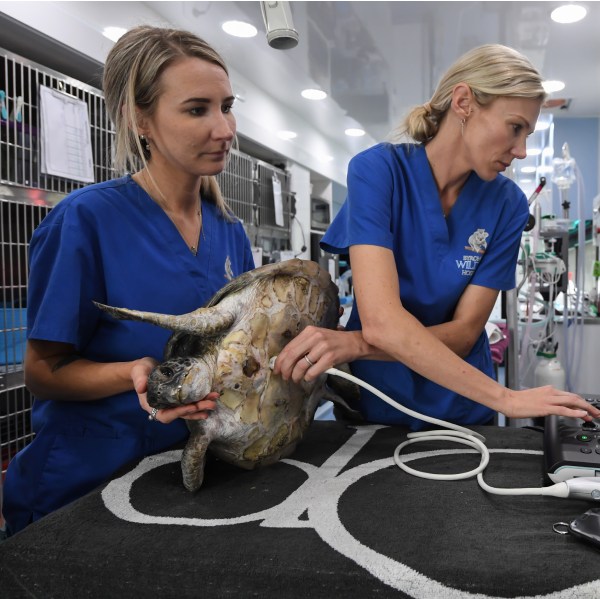
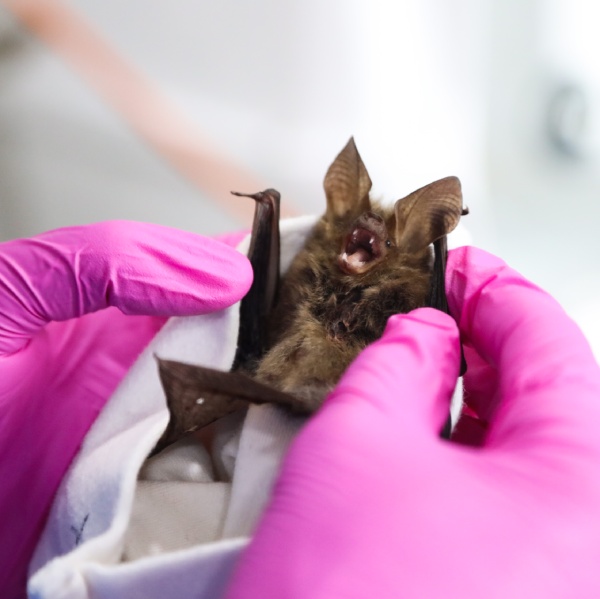
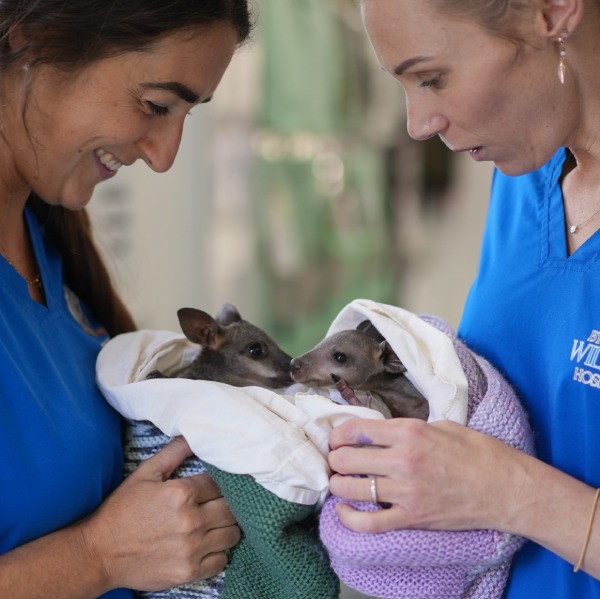
Photo credits: Biggy Pop, Nina Alu | Sea Turtle ,James D Morgan Getty Images | All others Byron Bay Wildlife Hospital
In addition to all this veterinary equipment, Matilda has solar panels to keep her going and a satellite dish to keep her connected to the world. All this means top quality care available around the Northern Rivers region or wherever in Australia bushfires, floods and natural disasters put our wildlife at risk.
It’s now three years since Byron Bay Wildlife Hospital unveiled Matilda to the world. Since then, the charity has treated over 5000 animals in Matilda’s facilities. It sounds like a great Australian success story, but unfortunately, the future of the entire operation is in doubt.
In February 2023, the NSW Government announced $6 million of funding for Byron Bay, to cover the four years from July 2023 to June 2027. At a cost of around $555 per animal treated, that would care for over 2,700 patients per year. But on 23 June, just 8 days before the funding was expected to begin, the grant application was rejected. As we head into what’s predicted to be a fiery summer, Byron Bay Wildlife Hospital has to look elsewhere for the funds to keep going.
Friends and supporters are rallying round.
Tex Perkins, The Cruel Sea and Bluesfest put on a special WildAid fundraiser concert in October. Biggy and Iggy made a special announcement at the event. There’s a public campaign to raise funds – and just as importantly, to pressure the NSW Government into changing its mind.
‘The public support and media coverage we receive is sustaining our vet team to keep doing this essential work for wildlife’, said Dr Van Mil. ‘Every little bit helps. A donation, a sponsor, a letter to the government or spreading the word about our work helps our case.’
Find out all the ways you can help keep Australia’s largest mobile wildlife hospital on the road here.
We’re back in Sydney this month, talking to Karim Chammas of Beecroft Vet, which he opened in April 2019, and which has won the Local Business Awards for the last 3 years straight!
I always wanted to be a vet. I love animals, always have. But it’s very competitive, and I didn’t get the grades I needed at school. I graduated around 2000, which was the dot com era, so I enrolled in a Computer Science degree at UTS. I knew within the first week that it wasn’t what I wanted to do. Now matter how hard, no matter how long it took, I wanted to be a vet.
I finished the computer science degree, then got in to study veterinary science at the University of Sydney. I’ve been working as a vet ever since I graduated.
It’s a pretty standard small animal veterinary practice. We treat mostly cats and dogs, plus other pets like rabbits and the occasional guinea pig. We also treat injured wildlife when the community bring them in, which they do all the time. It means a lot of variety – I’ve treated fish, a turtle and lizards; I’ve operated on a galah. Every day is different.
The practice has three main vets, although one’s currently on maternity leave, and we’ve just taken on a newly qualified vet from the UK, Stephanie. We also have seven vet nurses and a couple of kennel hands – when the dogs have to stay in for treatment, we make sure they all get some fresh air. Our vet nurses are fantastic too. They help with all kinds of tasks such as taking bloods and giving injections, which frees up time for the vets to do diagnoses and assist with the more serious cases.
I’ve been to lots of industry functions and training courses over the years. I can’t remember when exactly I met Jim from Radincon, but I’ve known him a while. We had a lot of equipment when we opened, including an older X-ray machine. We were having problems getting plates for it, so I spoke to Radincon and now we’ve got up-to-date equipment.
We’re looking to add some CT equipment when we move premises too.
I have a revolving menagerie, with many of the animals coming from the clinic. Sometimes an animal is brought in which is obviously tame, but we can’t trace the owner. I often take those home, There have been so many birds – lorikeets, galahs and a cockatoo!
Right now I’ve got a dog called Jet and a canary called Peanut, whose been with the family for about 4 years. They’re both rescues.
My wife and I have three children, aged between 9 and 1. There’s not time for a lot outside work and family. When we’re with the kids, we love going to the beach, to restaurants and to arcades. It’s just good to spend time with them.
Our current premises are being redeveloped, so we’re looking to move within Beecroft. I’m hoping that will be the last move! Apart from that, I just really want to go on running the practice the way it’s going now. That’s about being the best, giving personal service, never cutting corners but doing everything properly.
First and foremost, enjoy it. I’m so lucky to be doing what I want. If that’s you, don’t take it for granted!
Being a vet is stressful and challenging. You’ll never know everything. You’ll never get it all right. And sometimes, whatever you do, it won’t be enough. But that’s no reason to stop. Just approach every day with a sense of humour, and keep learning. That’s the best way to enjoy it.
Radincon has been a proud supporter of Sydney Zoo since it opened in December 2019.
Sydney Zoo’s location means it’s accessible for the huge percentage of the city’s population who live out west, as well as for tourists. There are thousands of animals to see, from the classic Australian kangaroos and koalas to top predators like lions and tiger, to endearing favourites like meerkats and red pandas.
Caring for so many animals means a lot of work for the keepers, vets and animal welfare teams. Keepers monitor daily behaviour and keep an eye out for any change from the normal. That could be moving awkwardly, favouring one leg, or overall listlessness and not moving at all. Wild animals are especially good at hiding pain, since any sign of weakness can be dangerous, so careful observation is essential!
In addition to this monitoring, a program of regular health checks is used to assess all aspects of each animal’s health, while at the same time keeping human to a minimum. Radincon has assisted with these from the start. Not only have we supplied X-ray and ultrasound equipment, our staff have been on hand to advise about the equipment – although we leave the heavy lifting to the experts!
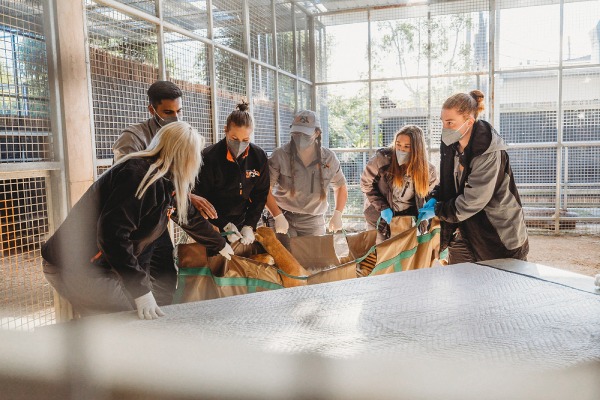
The standard health check regime includes non-invasive procedures such as weighing; blood and urine tests; a skeletal survey; ultrasound; oral examinations and of course checking eyes and ears. Some vaccinations are given as a standard. There are often specific areas of assessment depending on the species and the individual history of the patient.
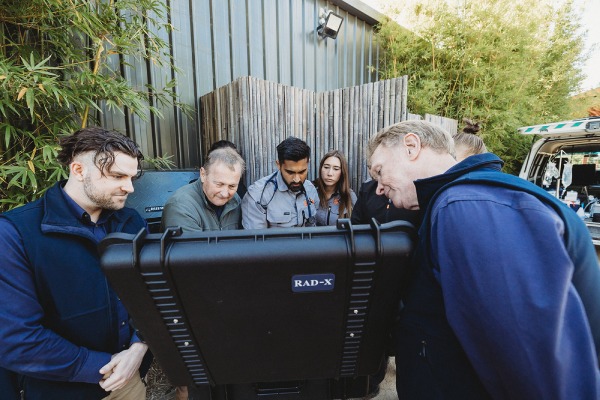
Even the king of the jungle needs health checks!
Sydney Zoo have four lion brothers. Here we’re putting 5-year-old Sheru through the full range of tests. He scored full marks for health, a testament to the care the Sydney Zoo keepers lavish on their charges.
You might also notice the milk-crate frame used to hold the X-ray equipment.
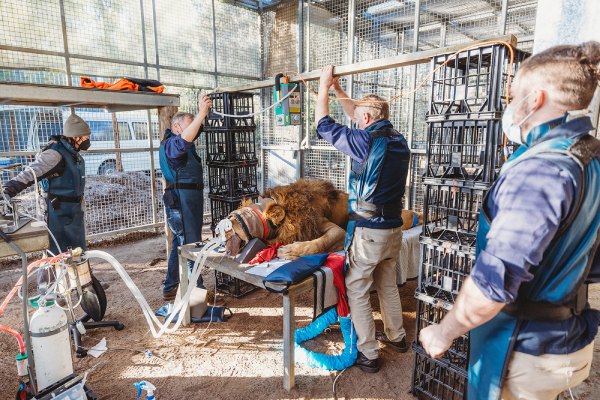
With mobile x-ray equipment, it’s possible to get closer to the animals, but there’s still a need to position the unit and the sensor panels. It’s often easier to move the equipment than the patient! This (unpatented) Radincon design is portable and flexible for use all around Sydney Zoo. The x-ray unit and the DR, however, are top quality. It’s about getting the best images possible.
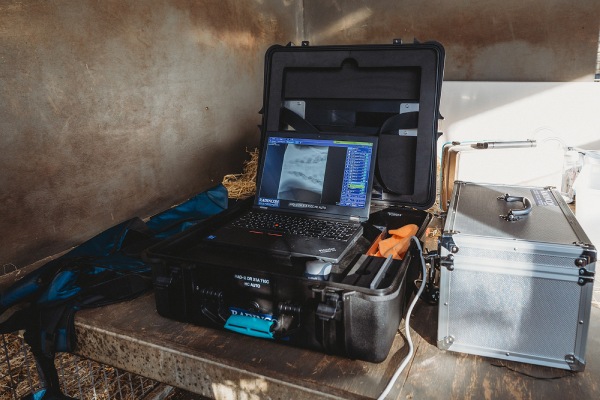
Santan is unusual amongst the Sydney Zoo animals in that he’s been treated by a human orthopaedic surgeon.
Santan’s 45 years old, which is equivalent to 75 orangutan years, and he’s suffering from arthritis. With 97% of his DNA the same as a human, he also has similar anatomy, so it was relatively simple for Dr Paul Thornton-Bott to inject steroids into his hips and his right shoulder.
Santan’s back in his enclosure with his daughter, in a lot less pain and moving more freely. Here’s hoping he’ll stay king of the swingers for some years to come.
Tashi and Pinju are much smaller than the other animals we’ve mentioned above, but what they lack in size they make up for in cuteness factor.
They’re red pandas, with beautiful rich fur to keep them warm through the harsh winters of their native Himalayas. Expert climbers with some of the cutest striped faces you’ll ever see, they’re easier to examine than the bigger animals. Once you catch them, anyway!
Tashi’s relatively new to Sydney Zoo, having arrived in January this year. She’s now a charming companion and potential mate for Pinju. Yes, they both got clean bills of health!
***
Our hats go off to the vets at Sydney Zoo, who care for an amazingly wide range of different animals. It’s always interesting for us to see the similarities between these exotic species and more common animals. Santan is enough like us for a human doctor to treat him. Tigers, like their smaller cousins domestic cats, tend to suffer from kidney disease in old age.
Above all, we’re impressed and grateful at the way the entire Sydney Zoo team care for their thousands of animals, enabling so many of them to live far longer than they would in the wild.
We look forward to an ongoing relationship with Sydney Zoo to care for the thousands of animals they look after in Western Sydney.
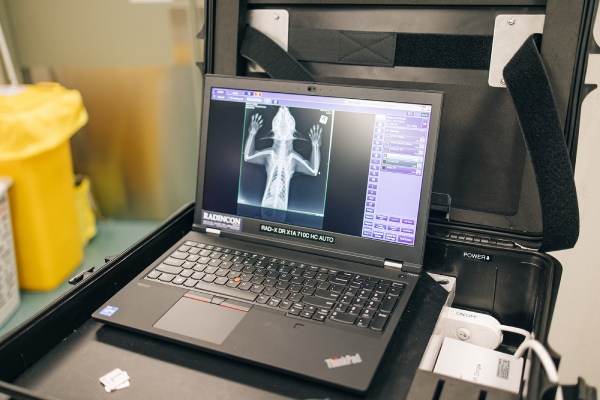
Ross Pedrana’s a country vet through and through. Born in Dubbo, schooled in Dubbo, running his own practice in Dubbo since 1991. He made it to Sydney for his veterinary degree, but for Ross, the city’s a place to visit rather than to live in.
Time to learn a bit more about Ross and his Dubbo practice the Pet Medical Centre.
It was a natural transition from the rural situation I grew up in. I spent time with horses, cattle and sheep, and that’s what I wanted to do.
I studied at Sydney University and completed my veterinary degree in 1973. I then took a position in Mudgee where I was exposed to a whole variety of equine cases thanks to the number of horse studs in the area. I was also mentored by experienced veterinarians who visited the studs. This massive equine experience helped me see my long-term future more clearly.
I moved to Dubbo, then to Narromine, where I established my own practice in 1976 catering for equine, livestock and companion animals across a wide regional and rural area. The practice grew to have four partners and a large and influential artificial breeding centre for sheep and cattle.
In 1991 I purchased a practice in Dubbo and ran that alongside the Narromine practice for many years. The Dubbo practice was closer to my rural property and my children’s schooling, and in 2002 I severed my business interest in the Narromine practice. I’ve been working in Dubbo ever since.
We actually run the practice in two parts.
The Pet Medical Centre has existed since 1970 and is in Dubbo itself. It’s the practice I bought into in 1991, and it handles the usual array of small animal medical and surgical cases, including many orthopaedic challenges which are common in a rural area.
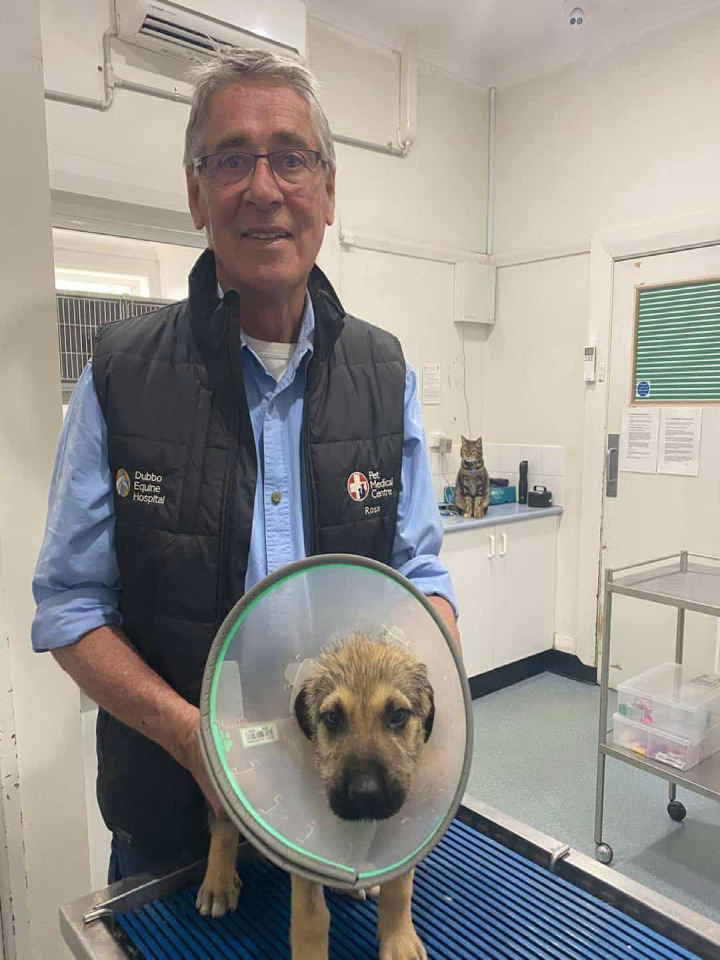
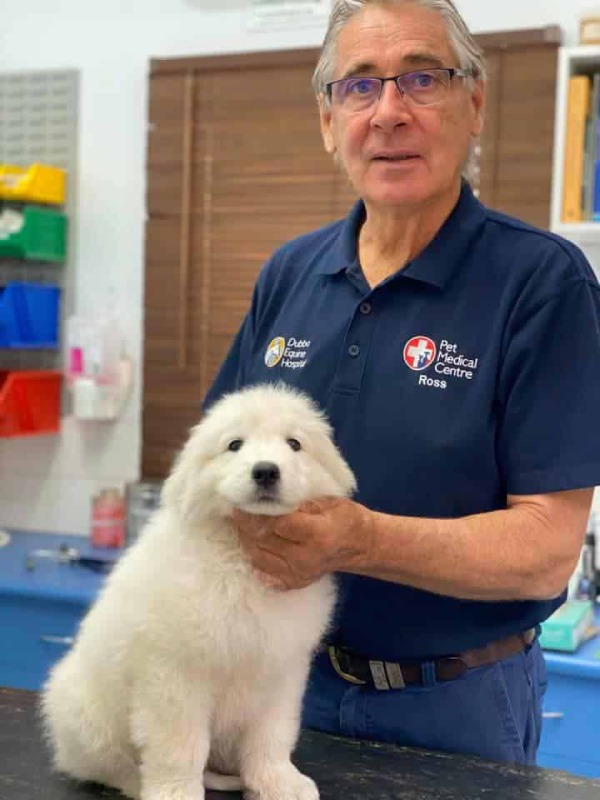
I also run the Dubbo Equine Hospital out of the farm where I live. We deal with all kinds of issues, from investigating lameness to surgery to breeding and more. We do a lot of trackwork, looking after around 250 horses.
More than half of the total vet business is equine-related and another third is small animals. The amount of livestock business we get varies with the prevailing weather conditions and the rural economy. With low livestock price and drought conditions, farmers are reluctant to incur veterinary expenses.
I can’t run the practice on my own. I have another vet assisting with the small animals, and we employ locums, generally for 3 days a week. I’d love to get two graduate vets to join me in the practice with a view to longer term transition of ownership.
I’ve been a vet for so long and the practice is varied. I’ve drained 38 litres of fluid from a horse suffering from pleurisy. I’ve treated a dog with a 70cm stick stuck in its chest. Today I have my hands full with 7 lame horses and some breeding work. Nothing much surprises me any more.
With the Dubbo Equine Hospital at our home, plus a farm, there isn’t always a clear work / life divide. We have sheep, cattle and horses of our own. My wife Gillian’s an artist, so I care for them and she paints them.
I met Gillian in the UK when I was President of Equine Veterinarians Australia and represented the organisation at a BEVA (British Equine Veterinary Association) conference, and persuaded her to come out here to join me. Our daughter, Lydia, is a journalist and our son, Andrew, is a local plumber. We visit Sydney quite frequently – either driving or flying. It gives us a break and keeps us connected.
I can’t remember when I first met Jon – I’ve known him as long as I can remember and I’ve bought all my X-ray equipment (three systems) from him. He’s the kind of professional you can trust, call a friend, and invite to sit at your kitchen table. He’s sat at ours on many occasions.
I’m not ready to stop yet – I love the Dubbo regional community and the opportunities it has given me over many years. But I am keen to find some like-minded veterinarians who share my vision for this community, so I can transition the practice and my clients to them.
Apart from coming to Dubbo and seeing whether you’d like to join the practice?
My biggest piece of advice would be to build professional connections. Find yourself a mentor – or mentors – and build a network of professionals (not necessarily veterinarians) willing to share valuable advice.
Get involved. Join associations. Reach out.
Don’t let distance stop you. I was never in the city, but I took my own advice. I was part of the AVA and the EVA. I supported the CVE at Sydney University as Secretary for almost 18 years. It helped me massively in my practice. I was able to tap into so much expert knowledge.
It’s really true that with the right attitude, you can develop aptitude and skills.
One final reminder: Look after the clients and the patients, then the money will come.
Radincon became a VetPD Asia-Pacific industry partner in 2022, where courses are currently designed for equine vets. The courses are scheduled from February to June, avoiding busy times like the foaling season as well as major Australian events like the Bain Fallon Memorial Lectures.
What that means is:
From our perspective, it’s been a fantastic opportunity to get out and meet some amazing vets. The small-group style encourages great conversations too.
After all the hard work of the 2023 training courses, we caught up with Petra Pellew of VetPD to find out a little more about the business and its history.
VetPD was founded in 2011 by Dr Emmanuel Engeli, an equine vet specialising in surgery. He realised there was a lack of no-nonsense, hands-on training with a practical focus for more experienced practitioners, and that’s what VetPD set out to deliver.
The first courses ran in November 2011 in Germany. Given Emmanuel’s background and contacts, the initial focus was on equine issues and treatments. The model was very successful and VetPD was soon running courses in most European countries.
From 2015, the company expanded into the US market, where it has an administrative office in Florida.
VetPD has also expanded its scope and now offers training courses for small animal vets as well as equine vets.
VetPD’s success and growth is built on some basic principles:
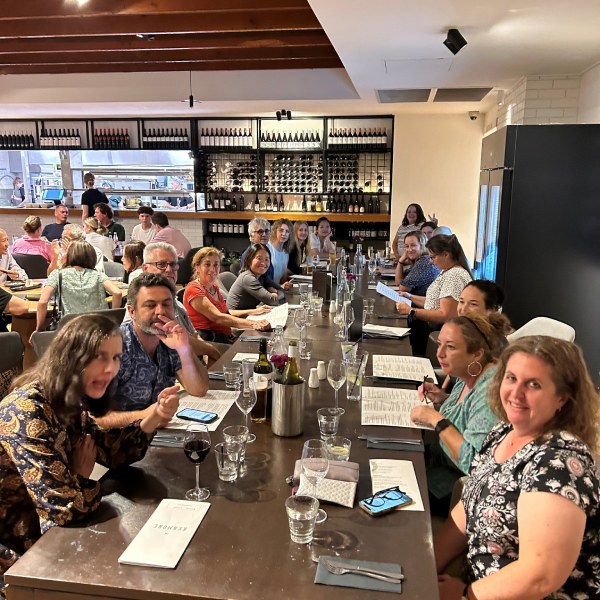
Graeme and Janelle McLeod, Australian equine vets, met the VetPD team while working at the Turkish Jockey Club. They joked at the time that when they returned to Australia they should set up VetPD courses there – and some years later the joke turned into reality.
The McLeods used their strong local network to run the Australian program until their retirement 3 years ago. Dr Gillian Burns has since taken over and manages the logistics of the current Australian courses.
Partnering in the last couple of years has helped us build relationships with the team, and we’re glad they seem to like us too. Here’s what Petra Pellew had to say:
‘The responsiveness of the Radincon team is fantastic, and the equipment is absolutely excellent. We get good feedback on the quality of the equipment and there’s always enough for everyone. Events run smoothly too. Jon’s one of those people who rise to a challenge. For example, we run events at private equine clinics, and not all of them have full AV equipment. Or they may not be set up with a large monitor so that everyone can see what the instructor is demonstrating. But Jon always comes up with some kind of construction to make things work. It’s amazing.’
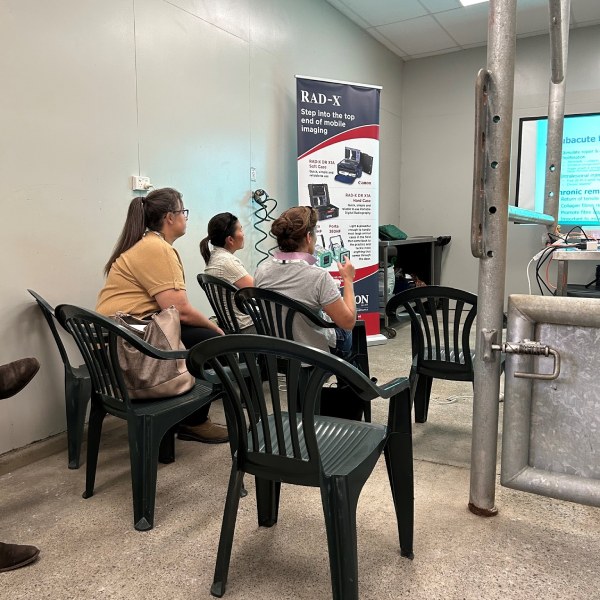
Just like every other business running in-person events, VetPD was hard hit by COVID. There was no option but to reinvent. The company livestreamed planned events, which at least meant the registered vets could listen to the lectures. It also introduced panel discussions, which are available live or as a recording. (Ideal for all of us in Australia, since panels usually take place in the small hours of the night!)
The panel discussion concept includes:
The panel discussions proved very popular. Some colleges now recommend them to residents, and from September 2023 they will be AAVSB RACE-approved too.
In-person courses began again in mid-2021. VetPD had to develop new processes and protocols to comply with COVID regulations across multiple countries, but the purpose was always to give vets the advanced, specialist training they need.
Vets are, and have always been, incredibly busy. COVID has made them more aware of options for online training – and of the advantages of spending less time on travel, away from the practice. At the same time, there’s nothing like practical training experience. In some countries, it’s actually required in order to keep your licence.
VetPD plans to continue offering both online and in-person training, keeping its focus on advanced and specialised topics.
As for Radincon, we’re fans of quality veterinary training using high quality veterinary equipment. Roll on 2024!
Port Macquarie Koala Hospital has a long history of caring for koalas in NSW. It recently rebranded as Koala Conservation Australia and is now spearheading the world’s first wild koala breeding program. We chatted with General Manager Maria Doherty to find out more.
The Hospital’s a local institution, founded 50 years ago by local residents Jean and Max Starr to care for sick and injured koalas in Port Macquarie. It started by looking after koalas hurt by dogs or car strikes, but its operations have expanded over the years. Recently the Hospital started working with the local wildlife care group, FAWNA, to treat all kinds of wildlife – kangaroos, wallabies, possums and other marsupials, as well as birds and reptiles in need.
Many of the koalas we see are infected with chlamydia. This disease is the biggest killer of our wild koalas, so our vets screen every koala and develop a treatment plan in the hope we can cure and release them back to the wild. Following several years of extreme weather and ongoing habitat loss, we are finding koalas are less healthy than in the past.
KCA manages two plantations which grow ‘koala food trees’ to ensure we have enough food for koalas in our care. Koalas that can’t be released, because they would not survive in the wild, are sometimes kept as exhibit koalas, each with their own story. These koalas help us educate visitors, school children and tour groups about the plight of wild koalas and they also help the Koala Hospital raise much needed funds.
We also organise a national Koala Conference. It’s usually biannual but Covid meant a longer break. This year, we hosted the conference in Port Macquarie for around 340 researchers, ecologists, vets, vet nurses and wildlife carers who came to share knowledge and learn from each other. A feature was hearing about trials to immunise young koalas against chlamydia.
A current, major project is the development of a new facility which will host the first program in the world to breed koalas for release to the wild. During the Black Summer bushfires in 2019-20 we opened a GoFundMeaccount, hoping to raise $25,000 to build wildlife water drinking stations. We raised $7.9 million from the public, both in Australia and overseas! These funds have made it possible to develop the wild koala breeding program, one of our long-term goals.
This program is essential to the survival of koalas in the wild. Chlamydia is endemic, habitat has been lost to bush fires and development, and it’s predicted that wild koalas in NSW could be extinct by 2050. There are breeding programs at some of the zoos – we work closely with Taronga Zoo – but joeys bred in captivity are not permitted by law to be released to the wild.
In addition to rebranding as Koala Conservation Australia, we’re moving to a new site in the Cowarra State Forest. This location is named Guulabaa, which means ‘place of the koala’. We’ve partnered with Bunyah Land Council, the Forestry Corporation of NSW, Wildnets Adventure Park and Hello Koalas to build a tourism precinct, to bring in visitors and funds for ongoing operations.
Our part of the site will include not just the breeding areas, but also our koala clinic, koala exhibit yards and a scientific laboratory for further research. The site has been carefully planned to allow tourist access while still keeping the wild breeding area away from most human contact. There are strict biosecurity requirements too.
Like many others in Australia, we’ve been hit by rising construction costs, but development is going ahead and we’re excited to get our first wild koalas settled in soon.
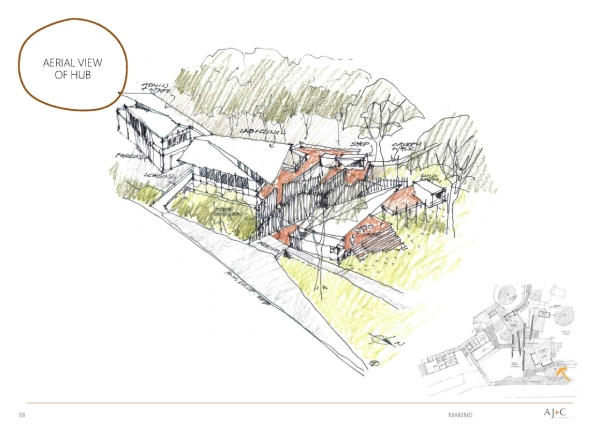
We know surprisingly little about how koalas breed in the wild. Some koalas seem to form pairs, but other males are keener on a harem. Our plan is to set up the koalas in both ways and see what happens. We’re working on that already, with teams from Taronga Zoo, the Australian Museum Research Institute, University of Sydney and University of Newcastle.
Our initial numbers will be quite small. We’ll be monitoring and learning, but interacting as little as possible. The breeding yards are separated from the tourism facilities by a creek to keep human contact to a minimum.
The aim is to have 55 breeding koalas in the yards by 2026, producing up to 35 joeys a year which we can release into the wild. We’ll be working with our partners to release these koalas in NSW following major research and assessment into where the most appropriate, koala friendly translocation sites are. We want to supplement affected populations, and improve genetic diversity. We’re also looking at potentially repopulating local sites impacted by the bush fires.
It’s very exciting and very new. After 2026, we will assess the program with the aim of expanding it to produce more joeys for release each year.
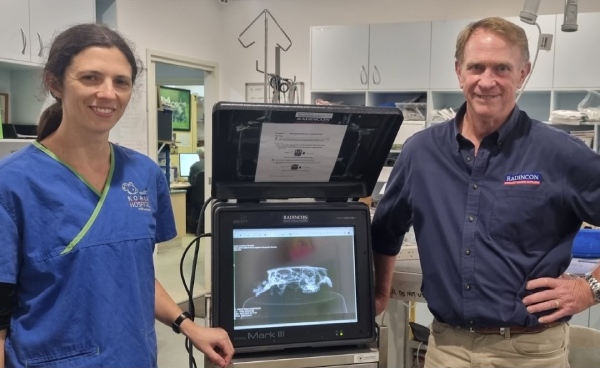
The koalas we treat have usually been injured by cars or dogs, so we need X-rays to understand the extent of those injuries and treat them properly. In the past we took injured koalas to other facilities for X-rays, but this caused stress on the animals and had a negative impact on recovery. They’re wild animals, not used to humans, and already injured. We received a grant from IFAW to purchase X-ray equipment and we reached out to various companies including Radincon.
Jon Marriott was amazing right from the start. He just said, ‘We’ve got some equipment we can give you.’ Not only that, he drove to Port Macquarie and delivered it to us. Since then he’s been back again with some additional equipment. It’s great to have Jon and Radincon supporting the Koala Hospital and to say ‘thank you’ we’ve made Jon into a Koala Ambassador.
One of the first koalas to benefit from the new equipment is Shelly Beach Road Trish. She was injured during an extreme weather event in Port Macquarie and had a bone fracture in her right elbow. The fracture has healed, but sadly she has not regained use of her right arm and will now stay on permanent exhibition at the Koala Hospital. Trish is available for adoption under KCA’s adoption program where all the funds raised are directed to caring for sick and injured koalas.
Radincon’s generosity also means we can use the grant from IFAW to purchase other, much needed equipment. Our goal in this and in everything is to ensure that wild koalas thrive in NSW long after 2050.
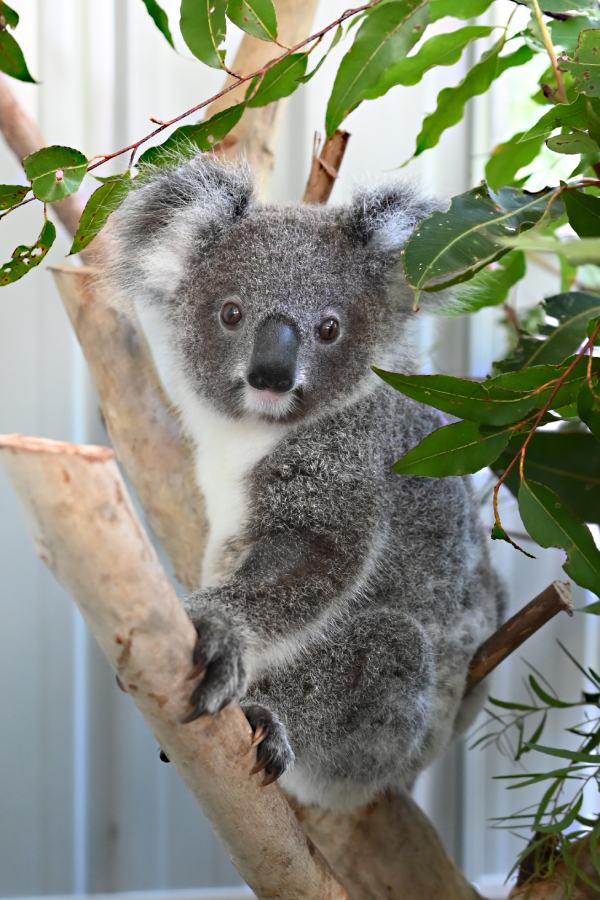
August 2023 saw the long-awaited return of Toothfest. Oliver Liyou and his team at EVDS normally run this globally recognised event every 5 years, but Covid delayed the 2021 event. All we can say is delayed anticipation made this year even sweeter!
This was a truly international, cutting-edge event. Not only did speakers fly into Australia from all corners of the globe, so did delegates. We were thrilled to meet people from as far afield as the UK, North America, South Africa and Norway.
We were also thrilled with how much there was to learn, and it led us to think about how the veterinary industry has changed over time. Once upon a time, most vets were in mixed practices and handled almost everything within their own practice. Now, there’s a tendency to be much more specialised. While student vets study a little of everything as part of their university course, many of them won’t do any kind of dental work at all after graduation. Vets in mixed practices and urban practices may see very few horses for any kind of work, so lack of experience means they refer issues to a specialist nearby. Even vets working in an equine practice may miss out on treating dental problems.
For attendees with this background, Toothfest was a chance to gain knowledge, experience and confidence, not just in dentistry but also in closely related areas such as general mouth and sinus health. For those with a more specialist dental background, there was plenty of advanced learning and discussion.
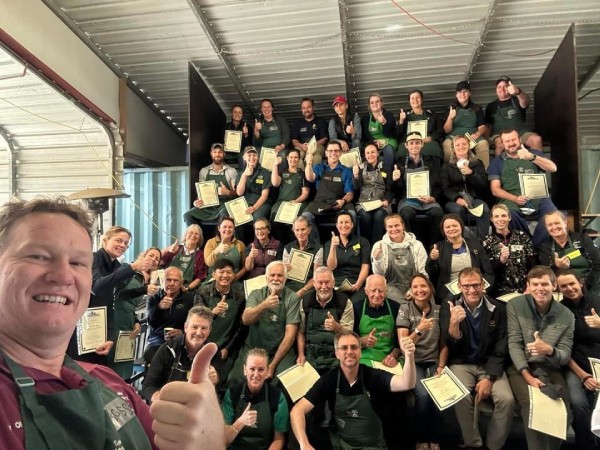
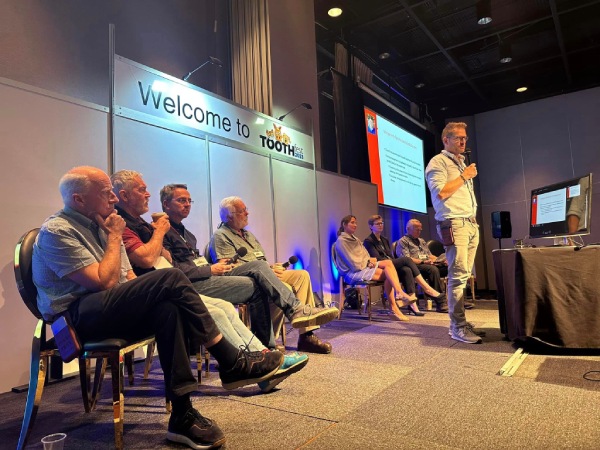
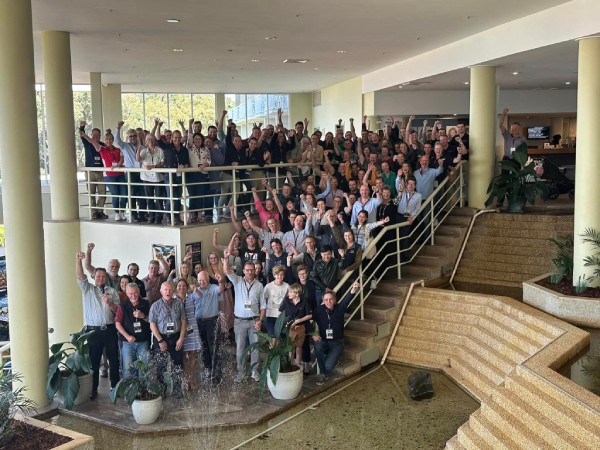
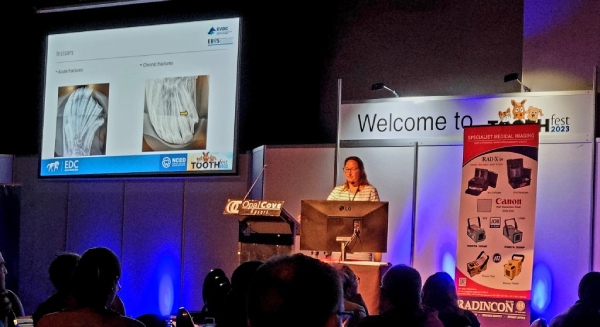
As major sponsors of this learning event, we also had a stand with all our equipment on display. Here’s the Radincon team – from left to right: Jon Marriott, Charles Spicer-Jenkins, Seb Wensing.
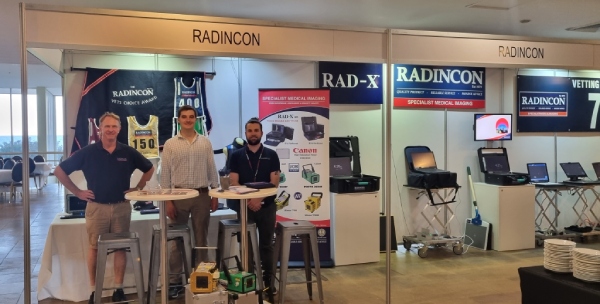
All of us extend our heartfelt thanks to Oliver, his team and all the presenters who made this event such a success. The entire speaker panel was fabulous, but we have a few special mentions to
Of course it wasn’t all serious learning. No really good event is.
Here are a few of the more lighthearted and relaxed moments.
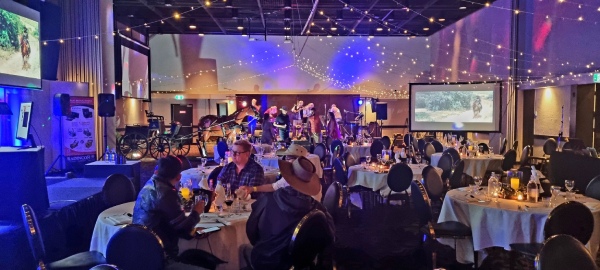
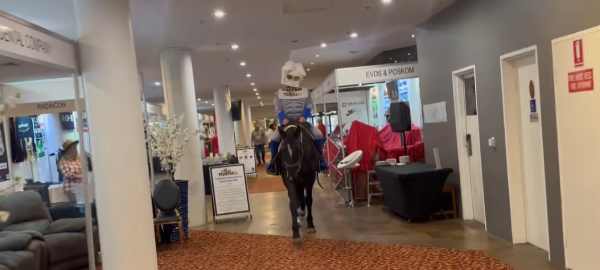
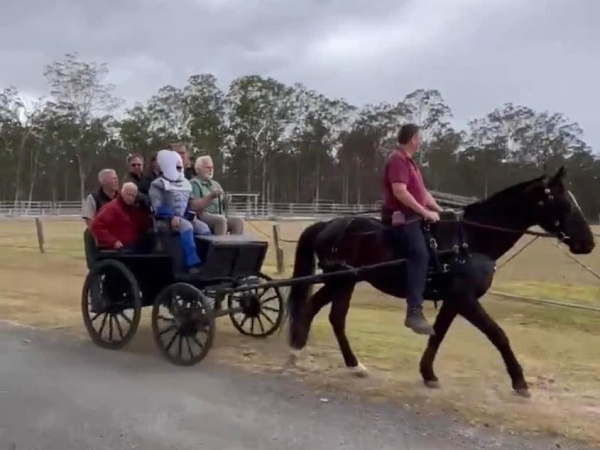
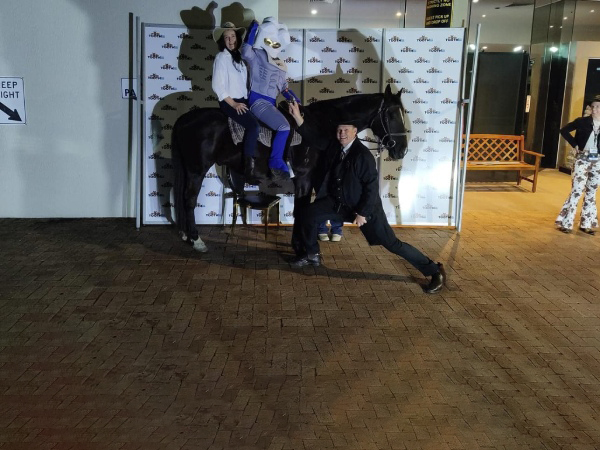
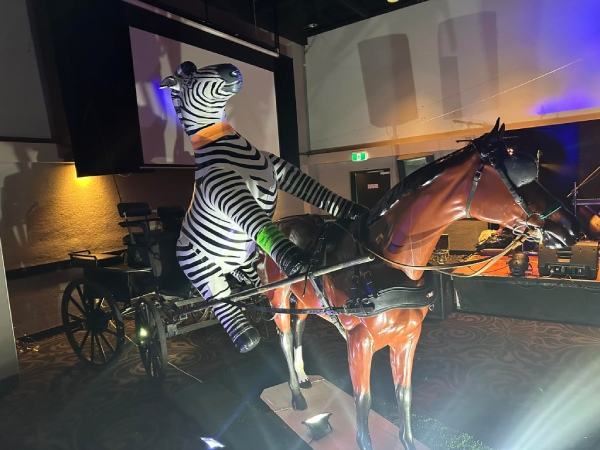
See you all again at the next one. Hoping it will only be 5 years this time!
Doctor Oliver Liyou founded Equine Veterinary Dental Services (EVDS) and has been training vets and horse owners on how to look after equine teeth ever since. We’re proud to have supported Ollie by providing the imaging equipment he needs for practical hands-on training.
We’ve provided equipment for (and attended) many courses, we have especially fond memories of the EVDS Equine Dentistry Level 1 course in June 2023. As always, there was plenty of laughter and good humour along with the learning.
One funny thing about equine dentistry is that you don’t always need a live patient to practice! All the same, we think Buffy is far cuter than any of those horse skulls, and we’d rather work with him any day! Luckily Brontë Fisher of Darling Downs Vets was able to give him a clean bill of dental health.
Skulls and Shetland ponies are a fixture at most EVDS events, but this particular course included an additional surprise element. Somehow the talk turned to poetry, and some keen people rose to the challenge.
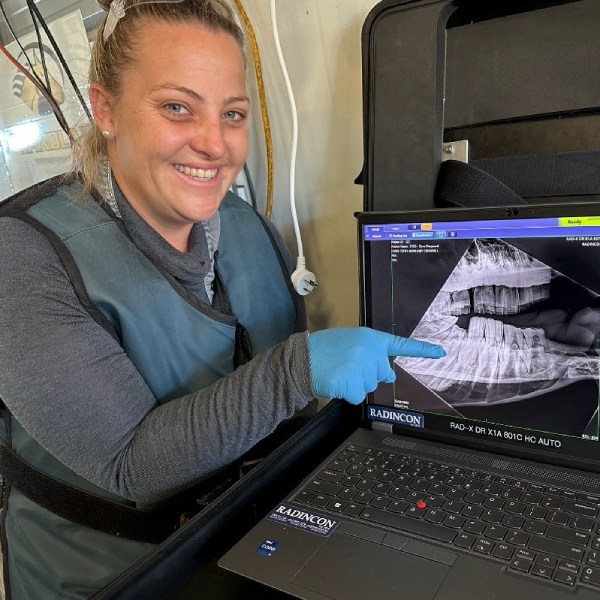

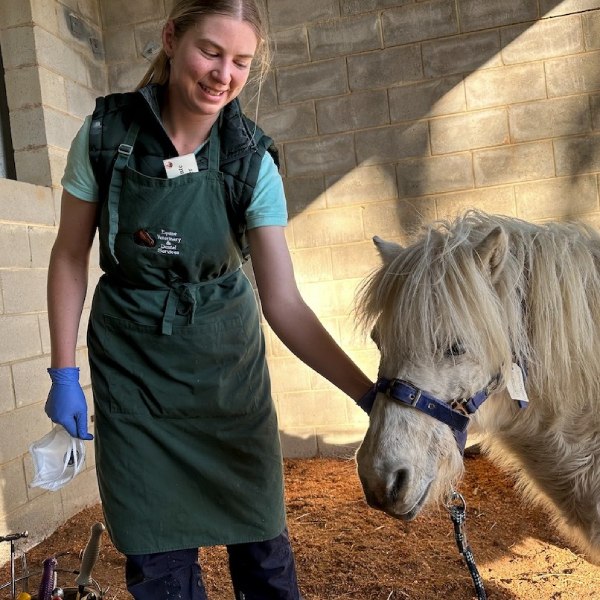
First off, here’s a poem by Paige Ludbury of Heartlands Veterinary Hospital, in the Avon Valley in WA.
Dear team of fabulous sponsors,
This an ode to your sponsorship,
Without it my equine dentistry would surely be shit. (Pardon the French).
And the scales would sure be tipped, away from the vets,
Into the hands of the lay dentist.
And oh what would become of the humble horse,
As it rears and snorts and cavorts,
From the lack of butorph.
As a hook is left, to tear a cheek
And a return to head tossing within a week.
So dear sponsors,
From a grateful vet, I thank you for contribution,
From which I can provide a resolution,
To the malocclusions and contusions,
To the humble and amazing horse.
Not to be outdone, Alex from 4cyte responded in kind!
Oh Paige, your words have touched my soul,
A poetic symphony that made me whole.
With grace and beauty, you penned your verse,
A heartfelt gratitude, I can’t rehearse.
Your poem, a melody of gratitude and praise,
For 4CYTE’s partnership in those equine dental days.
You painted images with words so fine,
Each line like a brushstroke, divine.
In the realm of dentistry, equine and grand,
Our sponsorship became a helping hand.
Together we embraced a noble cause,
Caring for horses’ teeth, obeying nature’s laws.
Your verse danced upon the page,
Enchanting readers, like a poet sage.
With gratitude, I now reply,
A heartfelt thanks, I cannot deny.
For your poem, a gift so rare,
An ode to our partnership, beyond compare.
In your words, I found solace and delight,
A testament to our bond, shining bright.
So, dear Paige, I extend my appreciation,
For your poetic creation, a true sensation.
Our journey continues, hand in hand,
Spreading smiles across the equine land.
This is the kind of community connection we love. It makes attending these events worth the plane flights and early morning drives.
It all goes to show there’s more to EVDS events than scoring a hat, although hats are exactly what these lucky winners got for the best radiograph of the day.
To put it another way:
Just take a little quiet time
The next time you’re apprenticed
To Ollie the equine dentist.
Scribble down some words that rhyme.
Almost before you know it
You’ll abandon teeth and jaws
And bow to rapturous applause
As Australia’s best horse poet.
We’re looking forward to Toothfest next week!
